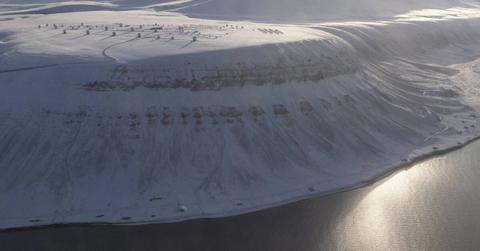Arctic Mystery: Bubbling Permafrost Signals Alarming Global Threat

Svalbard in Norway rests on a bed of migrating methane gas.
Prompted by mysterious bubbling noises, a team of researchers in Norway recently delved beneath the Arctic's permafrost and what they unearthed could have profound implications on the global climate.
The scientists, based in Svalbard, a Norwegian archipelago hosting the planet's northernmost town, uncovered significant concentrations of methane gas trapped beneath the permafrost. They warn that if released, this methane could contribute substantially to global warming.
Dr. Thomas Birchall from the University Center in Svalbard recounted the pivotal moment when their team confronted the possible threat. "The drillers heard a bubbling sound coming from the well, so we decided to have a look," he explained.
The team was “armed with rudimentary alarms designed for detecting explosive levels of methane” and the alarms were immediately triggered when held over the wells, Dr. Birchall said.
Utilizing historical data from commercial and research wellbores, Dr. Birchall and his team mapped the permafrost across Svalbard to identify gas accumulations. Surprisingly, they found that gas accumulations were more widespread than anticipated.
Out of the 18 hydrocarbon exploration wells drilled in Svalbard, eight exhibited evidence of permafrost, with half of them containing gas accumulations. This also suggested that methane migration is a frequent occurrence in the region.
Methane, a potent greenhouse gas, is currently leaking from beneath the permafrost at low levels. However, factors such as glacial retreat and permafrost thawing could potentially escalate this issue in the future, according to Frontiers.
The Arctic Ocean surrounding Svalbard is known for its extensive permafrost regions. While permafrost typically acts as a seal for methane emissions by remaining below zero degrees Celsius for two or more years, recent studies indicate that methane is migrating beneath the permafrost, particularly in highland regions with less ice.
- Covid 2.0? Arctic 'Zombie Viruses' Poised to Be Released as Climate Change Heats Up, Scientists Warn
- Going, Going, Gone: Ice Sheet Thaw in Greenland Gives Way to Alarming Rise in Vegetation, Greenhouse Gases
- What Lies Beneath: NASA Scientist Believes Aliens May Have Found 'Perfect' Hiding Spot in Earth's Oceans
Concerns arose that this migration could initiate a warming cycle, where thawing permafrost releases more methane, subsequently causing further permafrost thawing.
Furthermore, the release of sufficient methane from the protective frozen barrier could hinder efforts to limit global temperature increases to 2.7 degrees Fahrenheit above pre-industrial levels.
Never miss a story — sign up for the Front Page Detectives newsletter. Be on the scene the moment news breaks.
Currently, carbon dioxide is the most prevalent heat-trapping gas, contributing to 65% of planet-warming pollution. Although methane exists in lower concentrations at 16%, it is 28 times more potent than carbon dioxide. A study by the United States Geological Survey attributes approximately 25% of warming temperatures to methane.
"Methane is many times stronger than carbon dioxide in its ability to trap heat. But its lifetime in the atmosphere is shorter because it breaks down over time. Carbon dioxide, on the other hand, is more stubborn and can persist in the air forever," notes the study.
Become a Front Page Detective
Sign up to receive breaking
Front Page Detectives
news and exclusive investigations.
